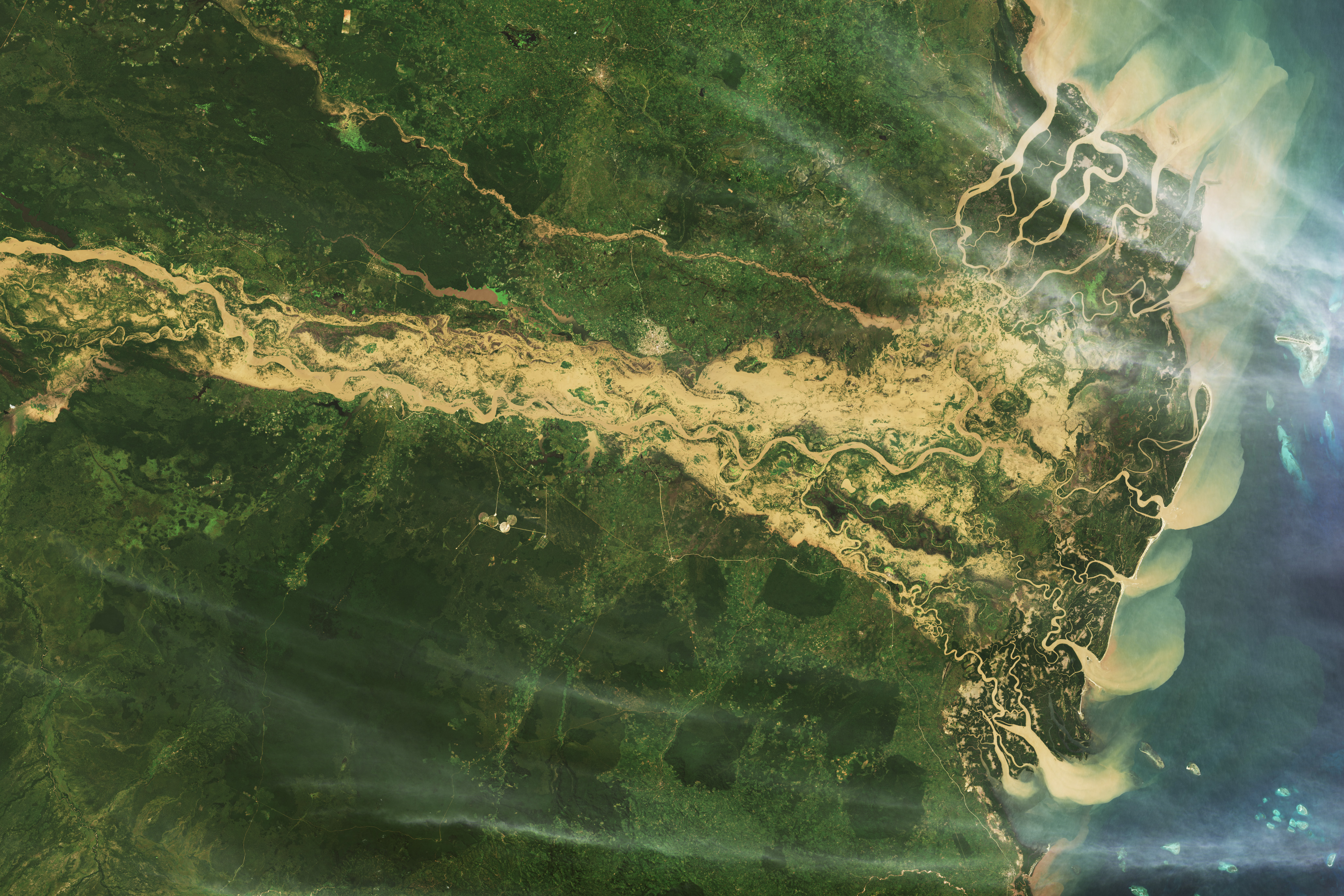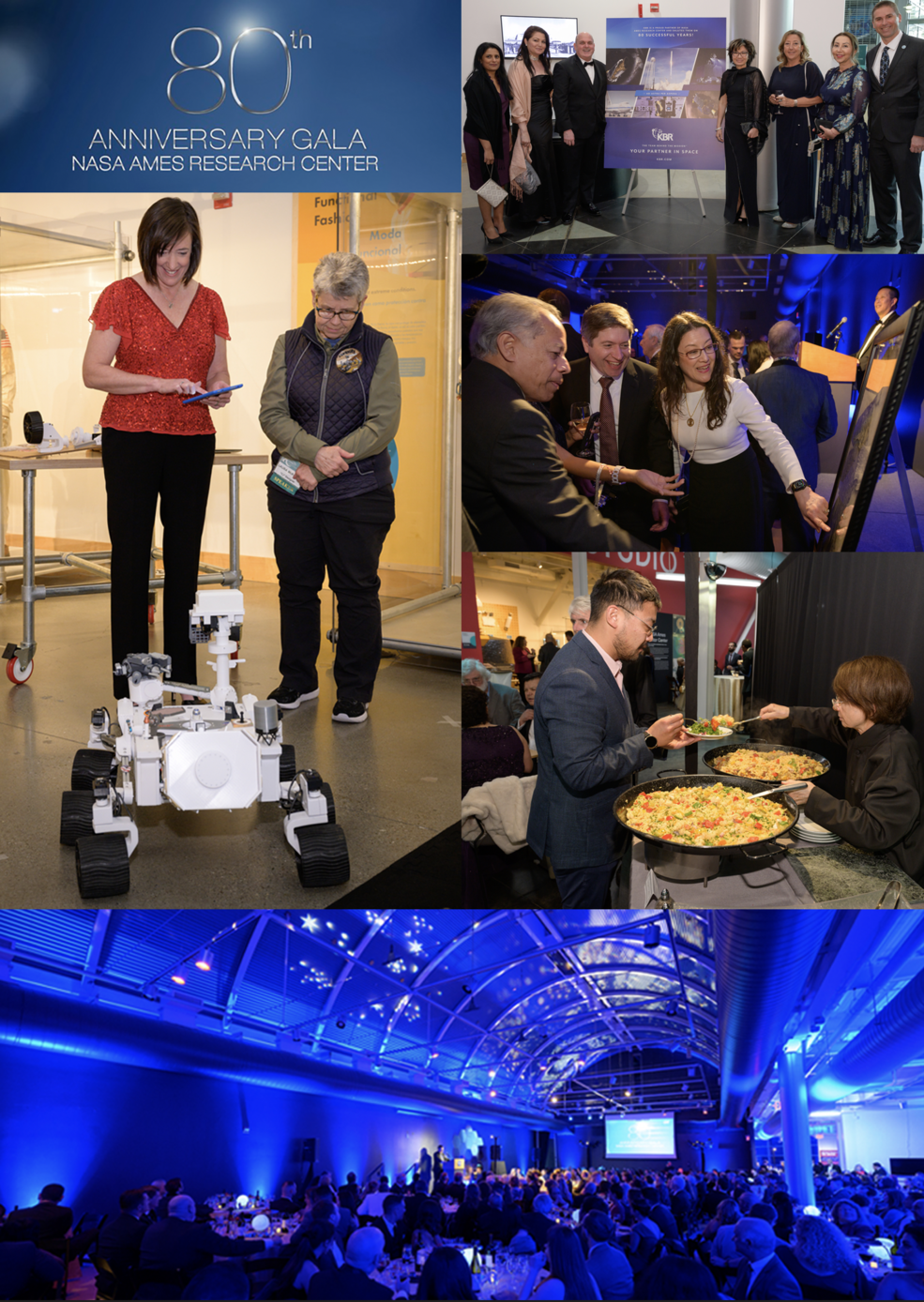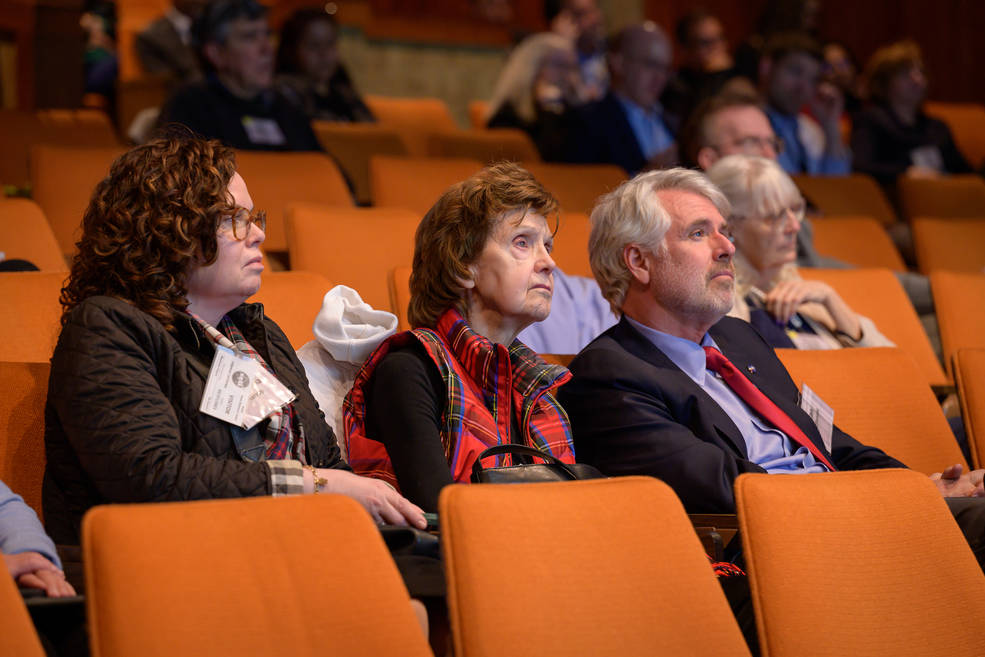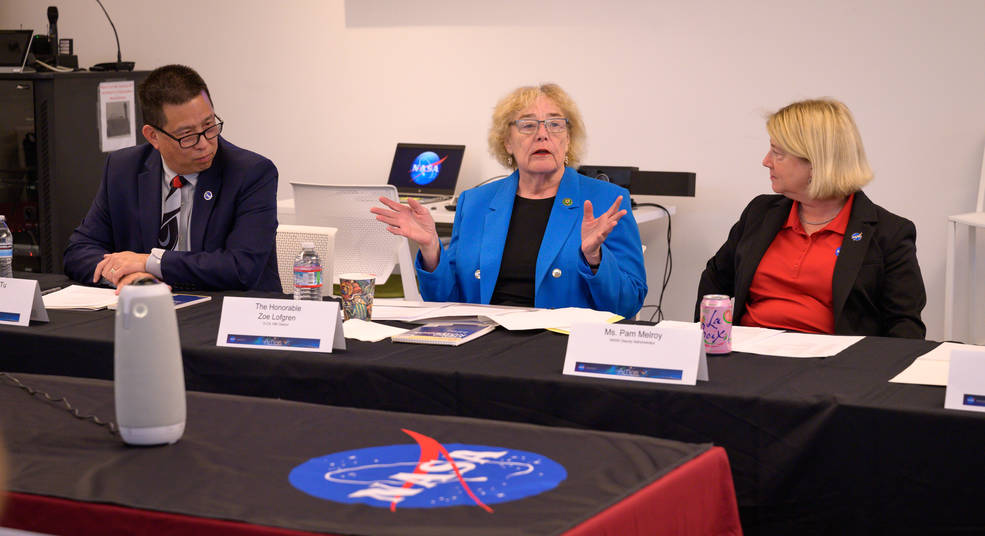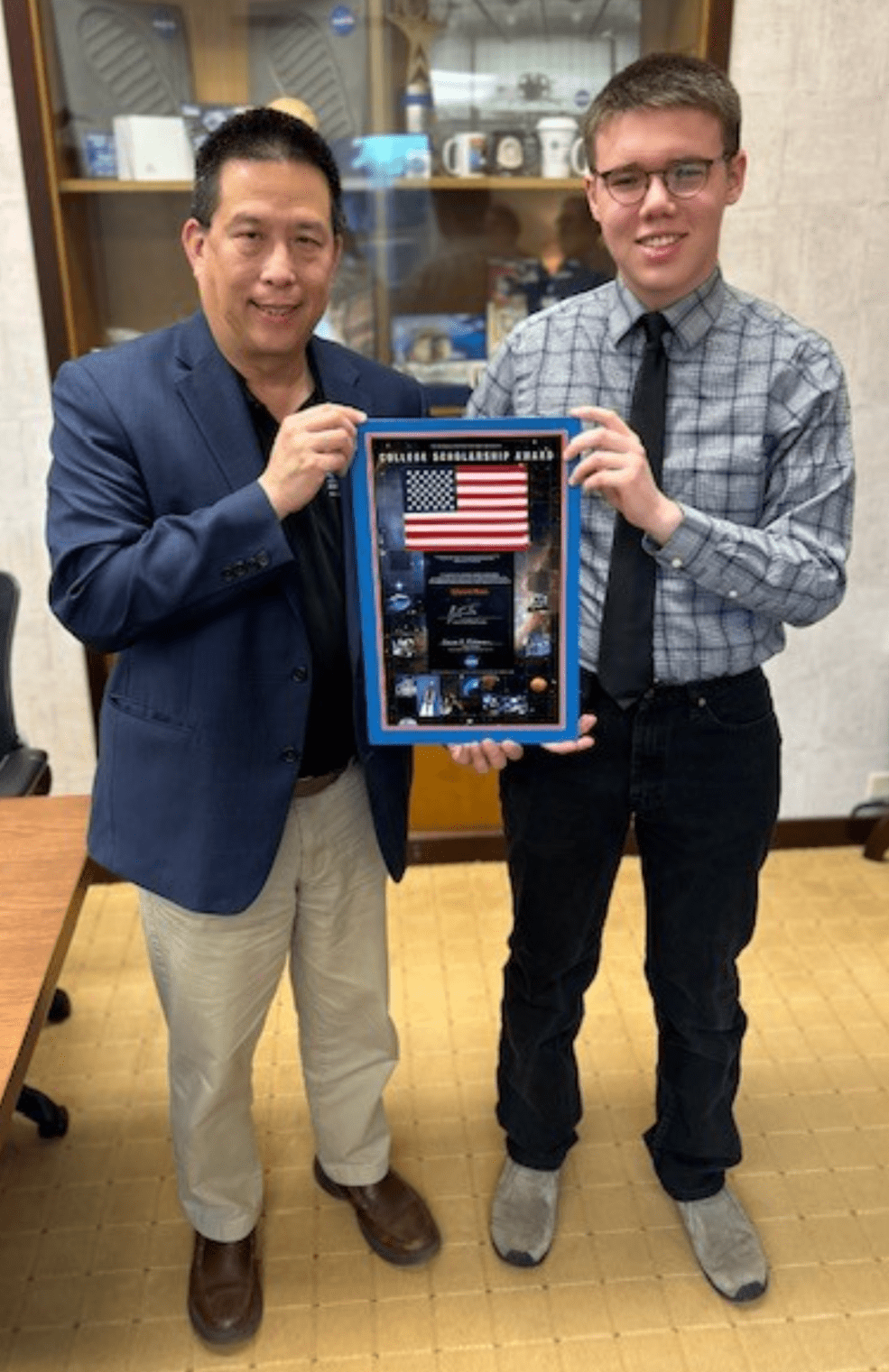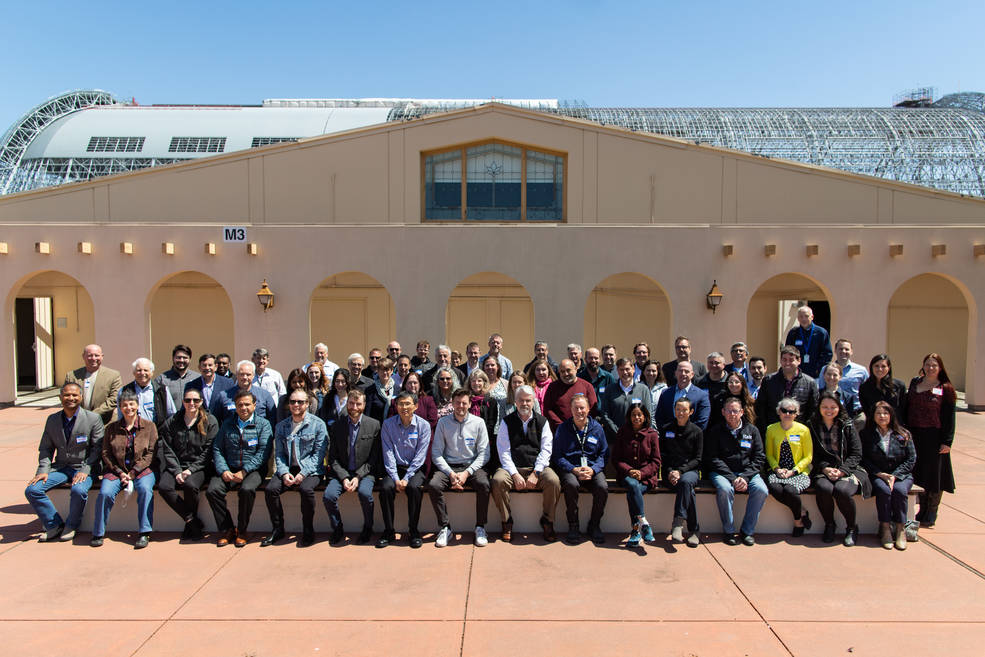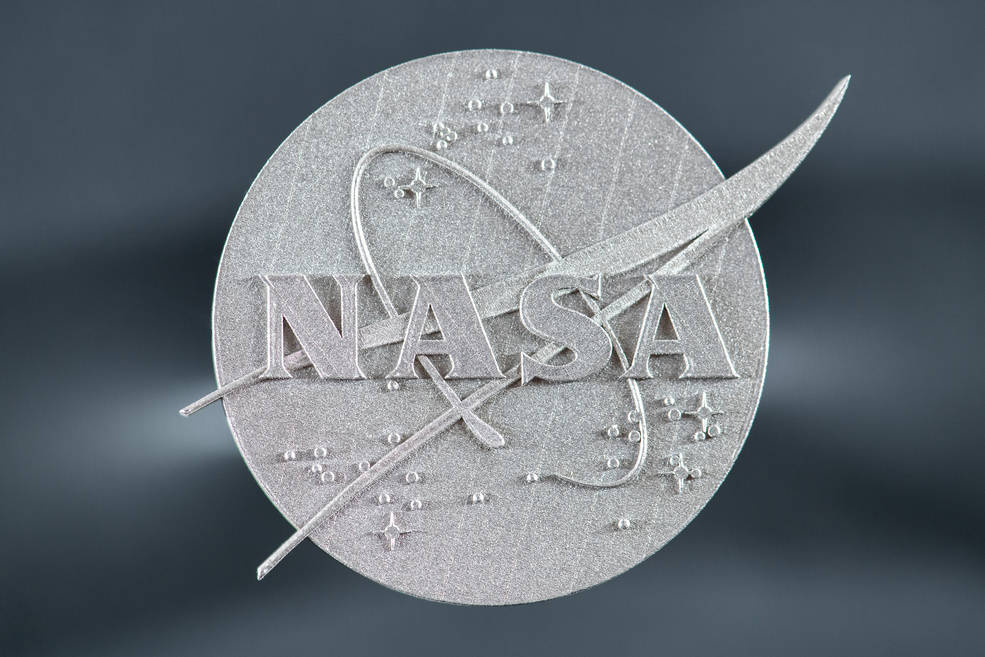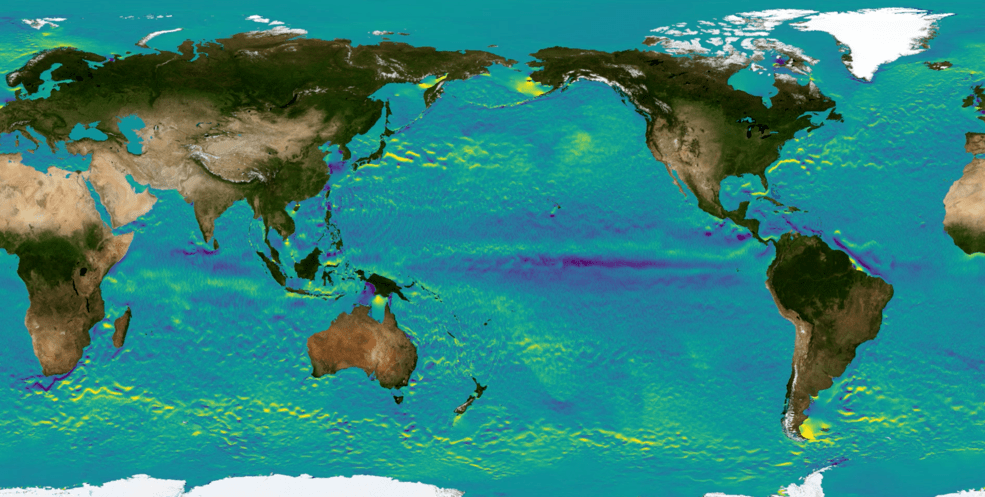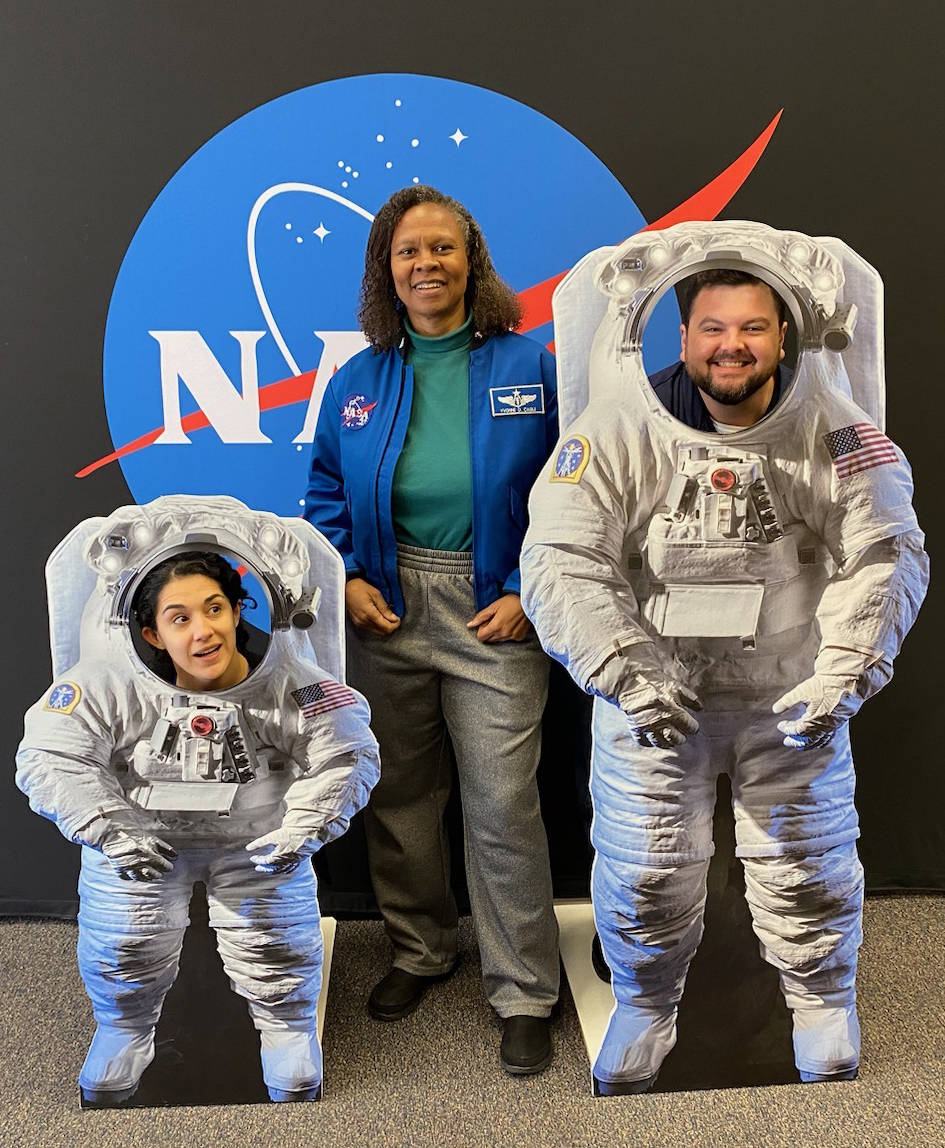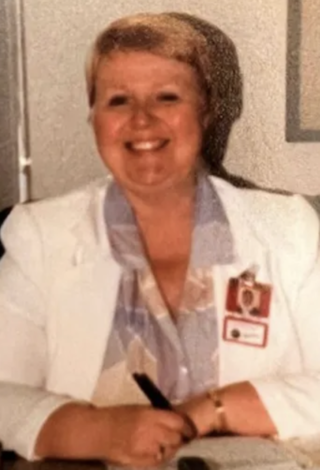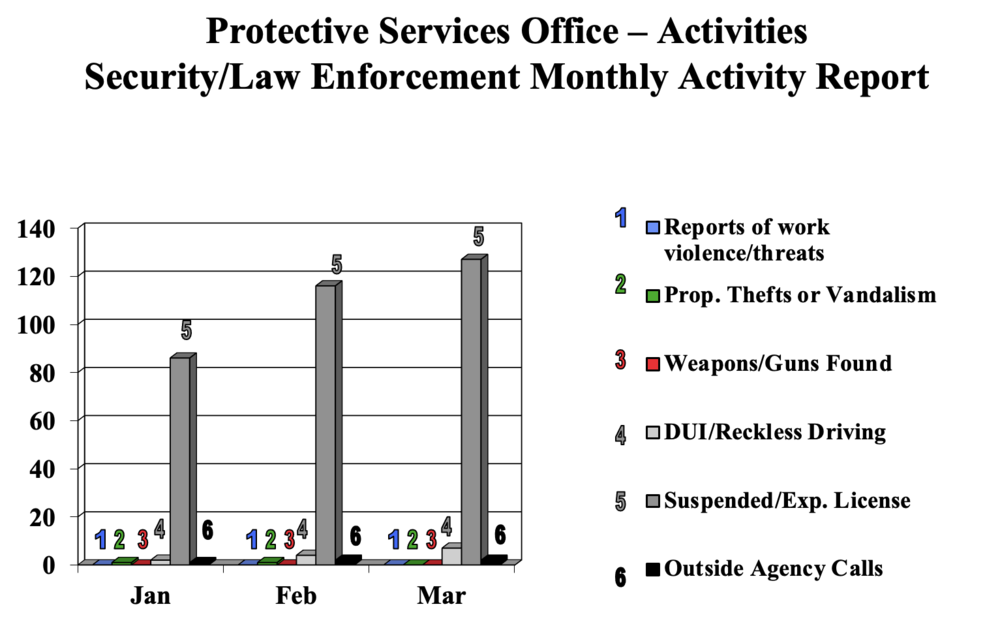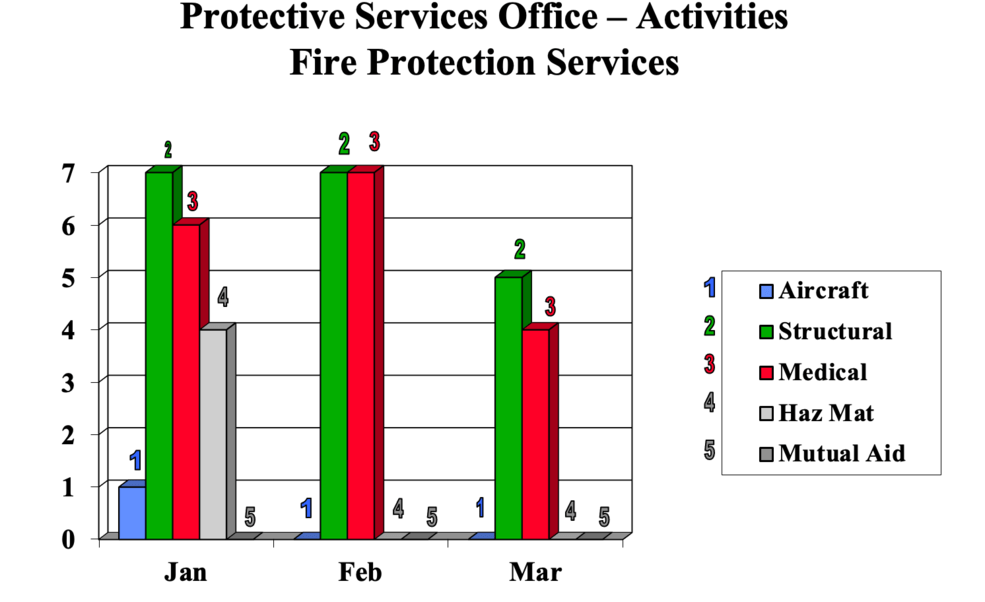April 2023 issue of the Ames newsletter, the Astrogram

Moon to Mars Town Hall Discussion Held with Administrator Nelson and Agency Leaders
Ames hosted NASA leadership on April 13 for a two-session town hall presentation where they discussed the agency’s Moon to Mars architecture. Employees filled the auditorium to learn about the overall Moon to Mars strategy and how we will achieve it. During the first session, agency leaders discussed Moon to Mars objectives, agency strategy for its architecture, and contributions from Ames. The second session included additional details about how we will execute the Moon to Mars objectives, including implantation, project management, and acquisition.
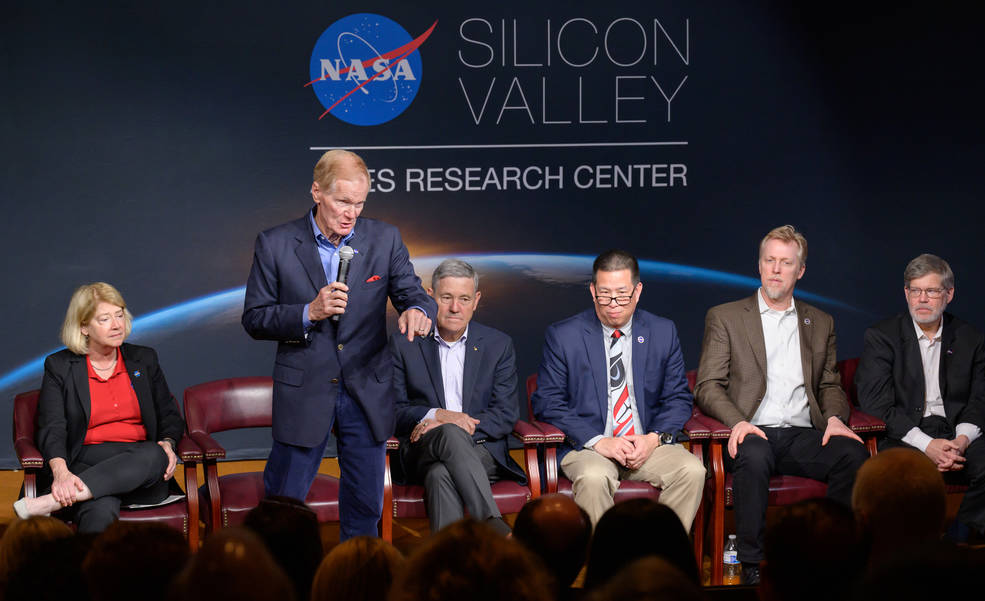
NASA Ames’ 80th Anniversary Celebrated at Gala Event Held at Chabot Space & Science Center
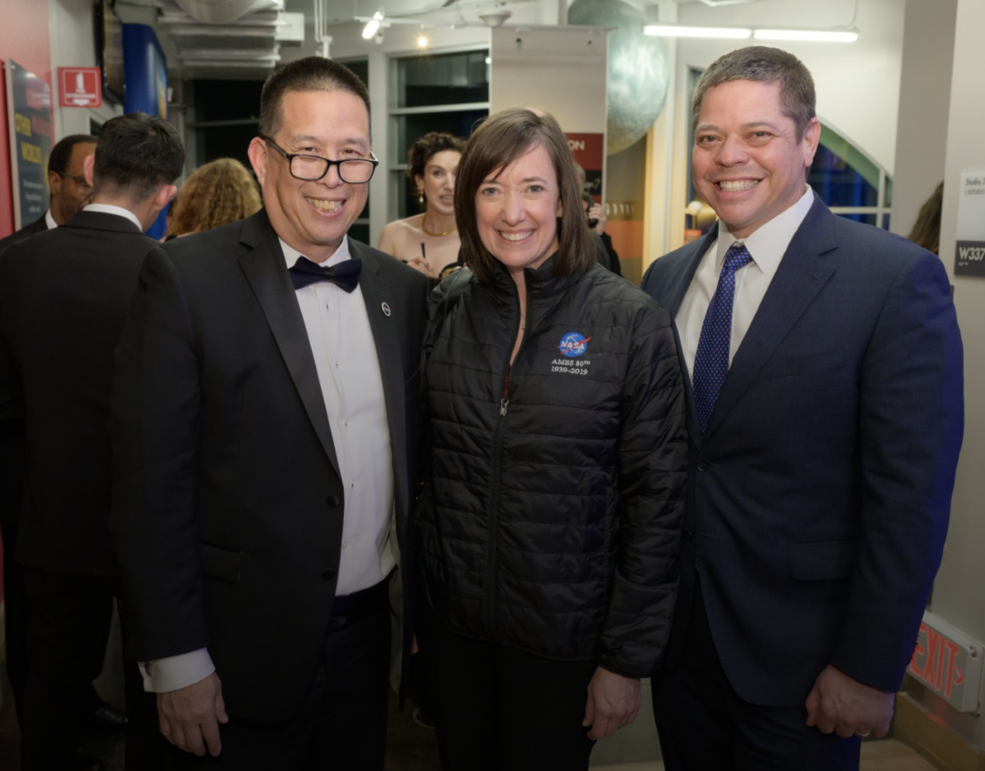
Symposium Honors Former Ames Center Director Henry “Harry” McDonald
Ames held a special symposium honoring the late Ames former center director, Henry “Harry” McDonald. As center director from 1996 to 2002, Harry oversaw a 5,000-person research effort in supercomputing, information technology, aeronautics, biotechnology, and space science research. In 2009, he was inducted into the NASA Hall of Fame for his exceptional leadership and keen technical insight in re-inventing Ames. Dr. June McDonald, along with their daughter, Catriona McDonald Harrop, sons Ian and Gordon McDonald, and additional family members attended the symposium. First, a photo montage of Harry was presented, then Ames Center Director Dr. Eugene Tu welcomed the guests and former NASA Administrator Dan Goldin spoke about Harry’s contributions to NASA and Ames. His son Ian McDonald spoke about his father, as did Bill Berry. Harry’s farewell video from 2002 was then played.
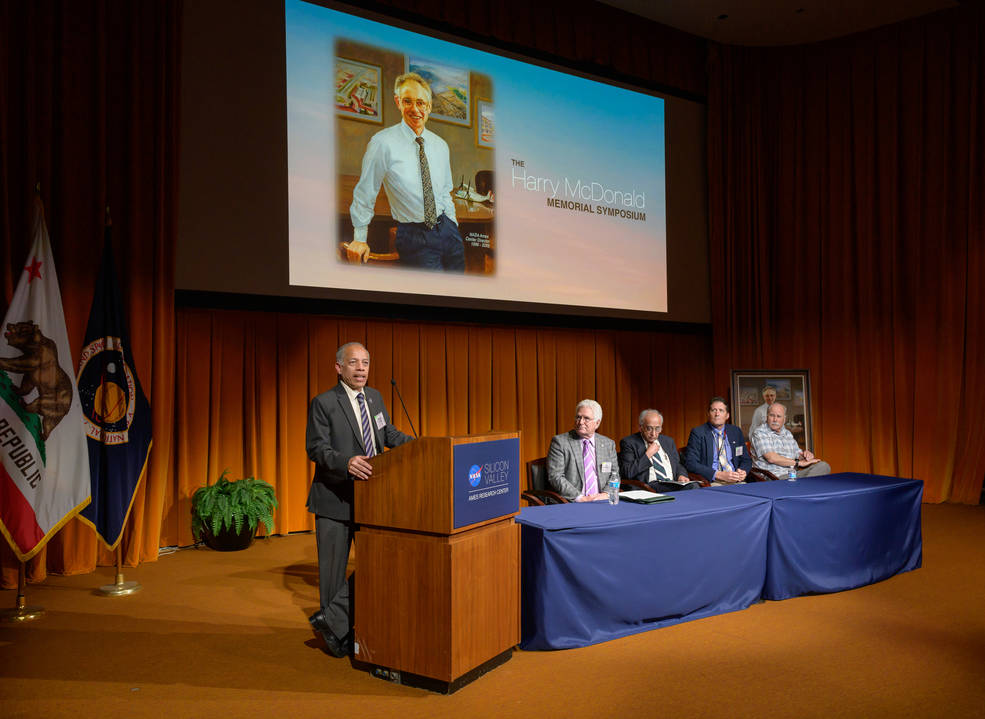
A panel of speakers spoke on the topic of information sciences, intelligent systems and was chaired by Dave Alfano with speakers Steve Zornetzer, Peter Norvig, Ken Ford, and Butler Hine. Next, was a panel on nanotechnology with Jessica Koehne, T.R. Govindan, and Jim Arnold. Then a panel on astrobiology, planetary search, and biosciences with Greg Schnidt, David Morrison, former Ames Center Director Scott Hubbard, Natalie Batalha, Jonathan Trent and Chris McKay. Following was a panel on human factors with Dan Goldin, Tina Panontin, and Alonso Vera. Aerosciences was the topic of the next panel with Rupak Biswas, former Ames Center Director Bill Ballhaus, Jayant Sabnis, Tom Edwards, and Tom Pulliam. Eugene Tu chaired the last panel on leadership perspectives with Ed Heffernan, Jack Boyd, K.R. Sridhar, Jack Hansen, Lew Braxton, Mike Francis, Luis Mederos, Bob Rosen, Nancy Bingham, and Lynn Rothschild. The symposium concluded with closing remarks from Dan Goldin and Eugene Tu.
NASA Leaders View Climate Science, Wildfire Innovations at NASA Ames
by Abigail Tabor
NASA is working to understand climate change and build resilience to its risks, such as the increasing threat of wildfire, for the nation and the world. On April 13, the agency’s top leadership visited NASA’s Ames Research Center in California’s Silicon Valley to learn about the center’s climate science and innovations in aeronautics that will help people everywhere face these challenges.
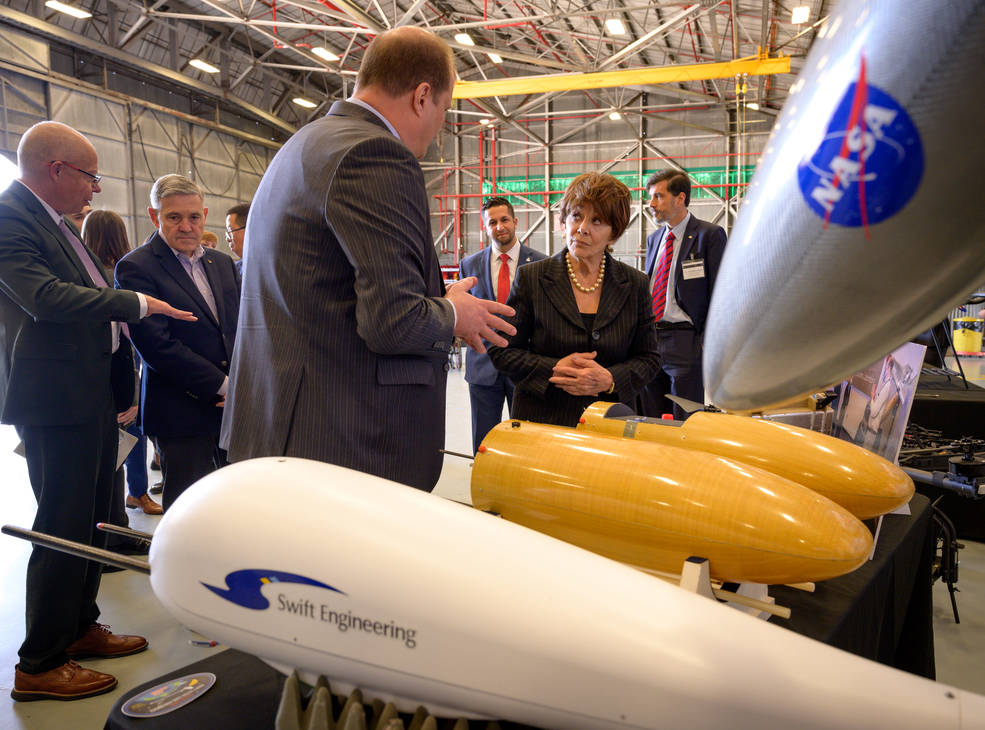
While innovating to improve life on Earth, NASA continues to look beyond, and the day began with a town hall meeting for employees, focused on the agency’s Moon to Mars initiative. NASA Administrator Bill Nelson, Deputy Administrator Pam Melroy, and Associate Administrator Bob Cabana joined other agency leaders to discuss the agency’s Moon to Mars objectives, a blueprint for shaping NASA’s exploration throughout the solar system.
Closer to home, Ames is bringing together experts from across NASA, other government agencies, academia, and commercial industry to address major wildfires in new ways. A group of them, along with U.S. Reps. Anna G. Eshoo and Zoe Lofgren, gathered today for a roundtable discussion of each partner’s unique contributions to wildfire resilience. Topics included the role philanthropic organizations and the venture capitalist community can play and ways to reduce the impact of fires on communities that have been disproportionately affected in the past, such as rural communities and people of color.
The group then joined members of the media for a tour showcasing climate science expertise and innovative solutions to better fight large wildfires by increasing the role of aircraft.
Deputy Administrator Melroy gave remarks pointing to NASA’s mission to innovate for the benefit of humanity and the importance of the agency’s partnerships.
“You cannot imagine how passionate the people are at NASA – and especially at Ames Research Center – about solving [the wildfire] problem,” said Melroy. “But we know we can’t do this alone. We’ve been really honored to lead an interagency coordination committee to bring together the technologies and the users to better understand how we can work together.”
The visitors heard about NASA’s Advanced Capabilities for Emergency Response Operations (ACERO) project. Led by Ames, ACERO is leveraging NASA’s expertise to develop an air traffic management system that integrates remotely operated aircraft into firefighting operations. ACERO will allow aerial wildfire suppression using these aircraft when pilots can’t safely fly around wildfires, due to low light or other low-visibility conditions. This is known as the “second shift,” and will allow crews to fight and monitor wildfires 24/7.
NASA’s Wildland FireSense project, which staff at Ames lead for the agency, was also highlighted. FireSense offers the resources of NASA and its decades of Earth science data to inform decision-makers and guide actions in fire management – before, during, and after a fire.
Unprecedented insights into Earth’s systems, backed by huge amounts of data, are also being produced by the NASA Earth Exchange (NEX), a Big Data initiative using NASA’s supercomputers at Ames. Leaders in Earth science at the center shared NEX work to substantially increase the resolution of global climate projections, enabling local decisionmakers worldwide to adapt to and better mitigate climate change effects, including wildfires.
Strong collaborations and expertise from many areas will be needed to tackle these challenges. NASA, including experts at Ames, will continue working closely with its partners to reach that goal.
Edward Ross Wins 2022 NASA Ames College Fund Scholarship
Congratulations to Edward Ross, son of Ames employee James Ross! Edward was selected as one of the 2022 NASA College Scholarship Fund awardees. Edward attends the University of California, Santa Barbara, and is majoring in mechanical engineering. This is a very notable achievement; selection is very competitive, and the Ames Family is proud to be represented among the 2022 awardees.
In his scholarship application, Edward displayed a high level of critical awareness, compassion, and a lifelong dedication to learning and knowledge seeking. He has an overwhelming devotion to creating positive change in everything around him. Edward has a passion for identifying problems that face humanity and working on creative solutions to solve those problems. His dedication to helping those around him has manifested a desire to want to teach a younger generation. This drive to help others has motivated Edward to pursue a degree in mechanical engineering.
Edward has never shied away from challenging himself as his high school resume is full of honors level courses. Edward also is highly decorated with multiple special recognitions, including but not limited to the University of California Regents Scholarship, Davidson Young Scholar, multiple science awards, and a music scholarship to attend the Valley of the Moon Scottish Fiddling School. Edward’s school activities included various research, projects, and publications, and was actively involved in band and orchestra.
We were extremely impressed with Edward’s credentials and determined he was highly deserving of this scholarship award. Edward had a 4.35 weighted GPA out of 4.0 GPA in High School and currently holds a 3.82 out of 4.0 GPA in college.
The NASA College Scholarship Fund (NCSF), Inc. is a non-profit organization that awards undergraduate scholarships to NASA dependents pursuing a course of study in science or engineering fields. This year applications will be received electronically and can be emailed to jsc-nasa-college-scholarship@mail.nasa.gov .
Please note April 30 is the final day applications or supporting application materials electronically will be accepted. For more scholarship information, and resources, please visit https://jscpeople.jsc.nasa.gov/fellowships.cfm.
Earth Day a Big Hit at the Ames Visitor Center at Chabot
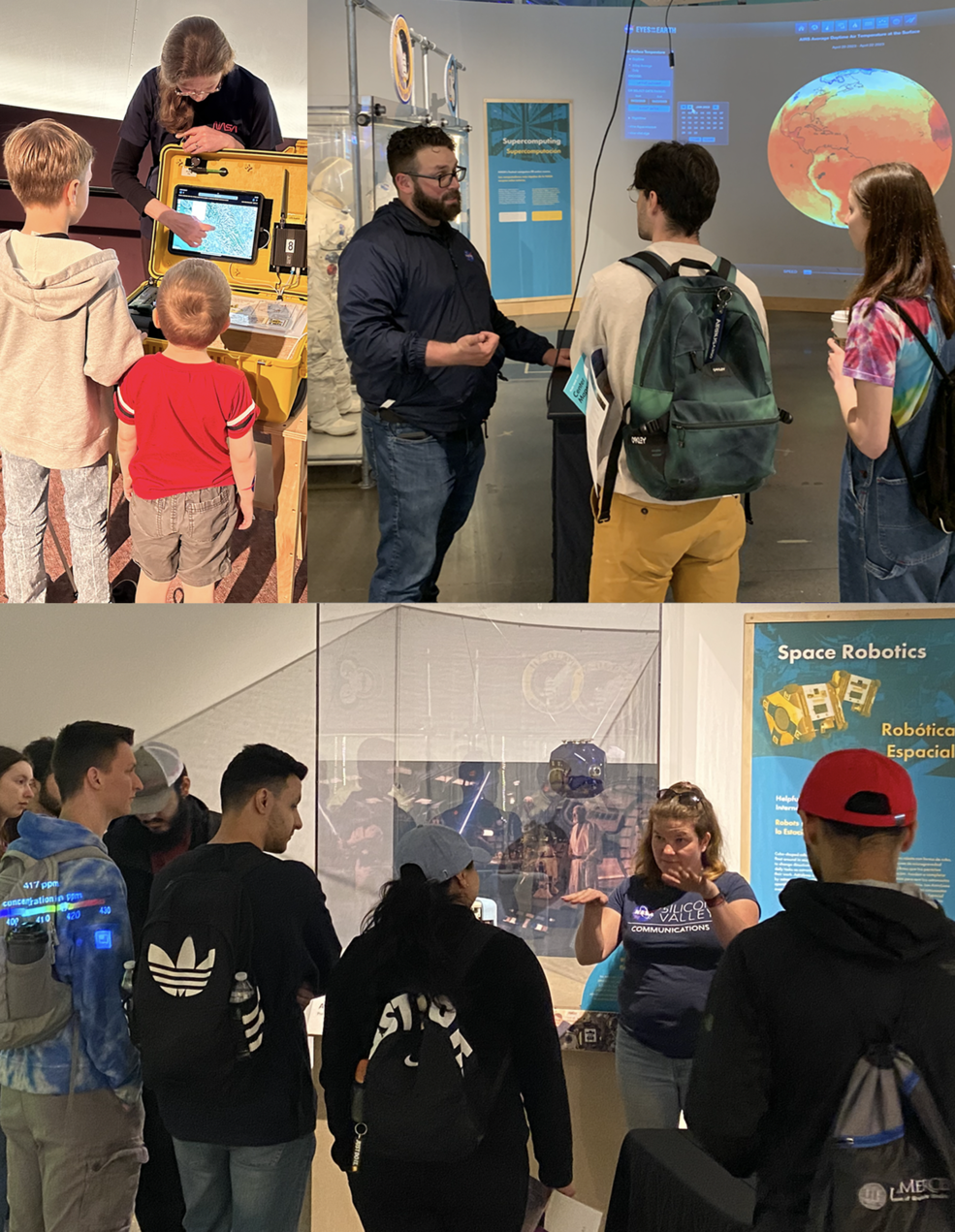
NASA Ames Hosts 20th Annual TFRSAC Meeting, Highlights Interagency Collaboration for Wildfire Management
by Mark Vorobets
On April 19 and 20, the Earth Science Division at NASA Ames Research Center in Silicon Valley hosted the 20th anniversary TFRSAC (Tactical Fire Remote Sensing Advisory Committee) – the first in-person meeting of the group since the advent of the COVID-19 pandemic in 2020. TFRSAC began in 2003 as a joint venture between NASA Ames and the US Forest Service, and has since grown to involve a wide range of public and private-sector entities involved in wildfire strategy and response. It is the only committee of its kind, bringing together science, operations, and field responses to work on tactical solutions for wildfire management in the United States and beyond.
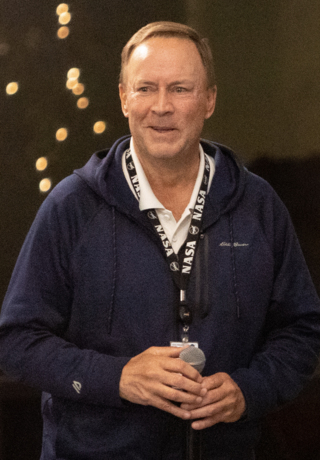
Day 1 focused on the programs and technologies being developed by various agencies and organizations involved in wildfire response, beginning at the federal level in the morning and funneling down to the private sector in the afternoon. Lawrence Friedl, director of the Applied Sciences Program at NASA Headquarters, opened the presentations with a high-level review of the growing interest in wildfire management and response. He carried an optimistic outlook of the potential for further political and financial support for wildfire efforts under the recent PCAST (President’s Council of Advisors on Science and Technology) presentation to President Biden.
Subsequent presenters in the federal sector, representing agencies such as NOAA, NASA Ames, and CALFire, discussed advancements in timely and actionable satellite imagery and remote thermal sensing capabilities, as well as consolidation of data streams for increased efficacy of communication. Representatives from the private sector shared emerging technologies also related to satellite imaging, covering advancements from airborne imaging to data integration frameworks.
Day 2 of TFRSAC centered around the applications of the data and research gathered by many of the technologies outlined on day 1. Speakers from public and private sector organizations gave a series of presentations and lightning talks, highlighting the need for greater efficiency in data management platforms and faster transmission of relevant information to firefighters on the ground. As Fire Management Specialist Kristen Allison put it, “the greatest gift you can give someone fighting a fire is time.”
The reach of TFRSAC stretches beyond national borders, inviting members from around the world. International presenters from the Canadian Forest Service and the Minderoo Foundation (Australia) discussed the impact of TFRSAC on developing their respective wildfire management systems and strategies, as well as potential areas for future collaboration in the face of expected increases in global wildfire activity. From the private sector, the Brazil-based company Quiron presented on potential applications of its data platform, which combines meteorological data with ground and field data to more accurately assess fire risk. Representatives from the Netherlands and Spain were also in attendance.
The unofficial theme of the event was collaboration; a founding value of the committee, many of the presenters emphasized how the advancements they were discussing would not have been possible without information and/or resource sharing between agencies. One example of this was highlighted by NASA Ames’ Peter Mehlitz, who updated the committee on ODIN: a wildfire software architecture that Mehlitz described as “a TFRSAC success story,” born out of the ideas and collaboration fostered at the biannual meetings. In a final address to the attendees, Vince Ambrosia reflected on watching this collaborative effort grow over the past 20 years, starting at under a dozen attendees the first year to a community of over 500 now.
NASA’s New 3D-Printed Superalloy Can Take the Heat
by Brian Newbacher
NASA has demonstrated a breakthrough in 3D printable high-temperature materials that could lead to stronger, more durable parts for airplanes and spacecraft.
A team of innovators from NASA and The Ohio State University detailed the characteristics of the new alloy, GRX-810, in a peer-reviewed paper published in the journal Nature.
“This superalloy has the potential to dramatically improve the strength and toughness of components and parts used in aviation and space exploration,” said Dr. Tim Smith of NASA’s Glenn Research Center in Cleveland, lead author of the Nature paper. Smith and his Glenn colleague Christopher Kantzos invented GRX-810.
Smith and his team employed time-saving computer modeling, as well as a laser 3D printing process that fused metals together, layer-by-layer, to create the new alloy. They used this process to produce the NASA logo pictured above.
GRX-810 is an oxide dispersion strengthened alloy. In other words, tiny particles containing oxygen atoms spread throughout the alloy enhance its strength. Such alloys are excellent candidates to build aerospace parts for high-temperature applications, like those inside aircraft and rocket engines, because they can withstand harsher conditions before reaching their breaking points.
Current state-of-the-art 3D printed superalloys can withstand temperatures up to 2,000 degrees Fahrenheit. Compared to those, GRX-810 is twice as strong, over 1,000 times more durable, and twice as resistant to oxidation.
“This new alloy is a major achievement,” said Dale Hopkins, deputy project manager of NASA’s Transformational Tools and Technologies project. “In the very near future, it may well be one of the most successful technology patents NASA Glenn has ever produced.”
A team of contributors from Glenn, NASA’s Ames Research Center in California’s Silicon Valley, NASA’s Marshall Space Flight Center in Huntsville, Alabama, and The Ohio State University co-authored the Nature paper.
GRX-810 was developed under NASA’s Transformational Tools and Technologies project, with support from the Optimized and Repeatable Components in Additive Manufacturing (ORCA) project under the agency’s STMD Game Changing Development Program.
Celebrating Our Ocean World at NASA in Silicon Valley
by Gianine Figliozzi
If early academics had known that our planet’s surface is more than 70 percent water, they might have named it Planet Ocean!
This Earth Day, NASA’s Ames Research Center in California’s Silicon Valley asked researchers studying our planet to share what excites them about Earth science and explain how they’re working to better understand, predict, and protect Earth’s life-sustaining water systems.
Flying into Storms
Snow is an important part of Earth’s water and energy cycles, from reflecting solar radiation to storing fresh water that melts into streams and reservoirs. But extreme snowfall is dangerous to people and infrastructure. To better understand how snowstorms form and help predict when they’ll happen, scientists in NASA’s Investigation of Microphysics and Precipitation for Atlantic Coast-Threatening Snowstorms (IMPACTS) team are using data from a combination of ground instruments, weather balloons, and research aircraft – which flew directly into storms to measure snow particles within storm clouds.
We spoke with IMPACTS contributors Vidal Salazar, the scientific project manager, and Stevie Phothisane, deputy project manager of the Earth Science Project Office.
What still excites you about studying Earth science?
Salazar: To this day – after 27 years – I still work in the field I fell in love with. I get to work in large and small campaigns and get to know scientists and students from all over the world. Meeting new people, new students, new scientists. Earth science field research is multidisciplinary, and we get to work with people from different cultures worldwide.
What would surprise people the most about your job?
Phothisane: Each mission is unique and involves different science, personnel, and aircraft platforms. The unique nature of each campaign challenges me to learn every day, not just about the new science that is being studied, but also the inner workings of the logistical side. Things don’t just get to point A to B easily. It really takes the collaboration of many groups and individuals to complete a successful campaign, including janitors, truckers, aircraft crews, project coordinators, and pilots.
What advice would you give to students thinking about working in Earth science?
Salazar: Look out for opportunities to participate in field deployments or data-collecting campaigns. These types of campaigns give you the opportunity to fall in love with observational science and take you outside of the classroom to do some real hands-on experiments. I would also tell them to do what makes them happy. Science has many shapes and forms, and they should look for that area that brings them joy and excitement.
What’s one thing you wish people better understood about climate change?
Phothisane: Climate change is already happening, from the loss of sea ice melting, sea level rising, to intense heat waves across the globe, so it is in our best effort to mitigate it as much as possible because there is only one Earth for all of us.
Inspiring the Ocean Scientists of Tomorrow
NASA’s OCEANOS project — led by Juan Torres-Pérez — marries STEM outreach with Earth and science observation efforts to better understand how humans impact the ocean and our climate. The four-year project teaches first-generation Hispanic students to use NASA Earth observations and collect oceanographic data to study issues affecting Caribbean coastal waters.
What made you want to study Earth science?
Torres-Pérez: Since the very first moment I had the opportunity to put a mask over my face when I was around 9 years old, to see the underwater world at a local beach in my beautiful archipelago of Puerto Rico, I knew I wanted to become a marine biologist. Seeing the underwater diversity of tropical coral reefs and later understanding the importance of these magnificent ecosystems reinforced my passion for the ocean and Earth sciences in general.
What still excites you about studying Earth science?
Torres-Pérez: There is so much we still don’t understand about our planet! The biodiversity of Earth’s terrestrial and aquatic ecosystems and how these interconnect with each other is extremely complex. I have been diving for more than 30 years and I always find something new underwater that grabs my attention.
How would you describe your work to a student thinking about becoming an Earth scientist?
Torres-Pérez: It’s exciting, super cool, and a career that provides lots of opportunities to explore the wonders of coastal oceans. My work integrates data collected by satellites with field study to understand the relationships between climate, humans, and tropical marine ecosystems. Also, by using NASA Earth observations and tools, I am able to study this biodiversity from a different perspective and reach poorly understood remote sites where access is limited.
What’s one thing you wish people knew or better understood about climate change?
Torres-Pérez: Simple — that climate change is real. Most times it is difficult to visualize since the effects related to climate change do not happen from one day to another, they take years or decades, but climate is affecting organisms at unprecedented levels and this, in turn, affects ecosystems, humans, and the planet as a whole.
How does your program embrace “open science”?
Torres-Pérez: Open science is critical, makes research transparent, and provides opportunities to explore collaborations or partnerships at national and international levels. All the data produced by the efforts that I have been involved with is made public, or at the very least is available for other researchers at their request.
Visualizing an Ocean of Data
The ocean is too vast, dynamic, and complicated for scientists to fully analyze or monitor with today’s tools. Even the data we amass is too much for typical computers to handle. The NASA Advanced Supercomputing division at Ames is helping an international group of scientists run complex simulations to unravel the role of ocean circulation in the Earth’s climate, using satellite observations, measurements from instruments in the water, and computer models.
As a data visualization scientist, Nina McCurdy works with the Estimating the Circulation and Climate of the Ocean (ECCO) consortium, which includes researchers from NASA’s Jet Propulsion Laboratory in Southern California. Their work helps scientists understand changes in the ocean that can impact society, including sea level rise, sea ice loss, El Niño events, and the cycling of water and carbon. And in the spirit of open science, the ECCO project makes their results available to everyone.
How would you describe the data visualization work you do on the ECCO project?
McCurdy: We take simulation output – numbers that describe how a simulated ocean changes over time – and make images and movies that allow scientists to see their simulation data in new ways. This allows them to notice things in their data that could be impossible to find looking at hundreds of trillions of numbers.
What do you see as the impact of your contribution to this work? What excites you about it?
McCurdy: Data visualization supports many aspects of ECCO research, from monitoring and fine-tuning the simulations as they are running to analyzing the results and communicating them to the scientific community and the public. It is a great honor – and a thrill – to collaborate with devoted, world-class scientists doing such important, cutting-edge research and sometimes to even help them learn something new about their science.
Describe something you’ve learned about Earth through working on these simulations and visualizations.
McCurdy: Every time I help with visualizing ECCO simulation data, I learn about an entirely new area of ocean or climate research, and I’m reminded of how vast and rich this area of research is. And, as with other computational sciences, the real magic happens at the intersection and interaction of simulated and observed data.
Astronaut Yvonne Cagle Poses with Fellow Employees In Between Town Hall Sessions
In Memoriam …
Former Deputy Chief of Acquisitions, Carolyn LaFollettee, Passes
Carolyn S. LaFollette passed away at her Carlton Senior Apartment Home in Fremont, California, early on Tuesday, March 14, while under hospice care. Carolyn was born in Portland, Indiana, on August 16, 1945 to the late John and Juanita (Orcutt) LaFollette and the family soon relocated to Randolph County where she spent her childhood. Her graduation from Lee L. Driver High School in Winchester, Indiana, in 1963 was followed by obtaining a B.S. Degree in 1967 from Ball State University in Muncie, Indiana.
During her working years, Carolyn attended St. Mary’s College part time in Moranga, California, and received her master of science degree. She retired on January 2, 2004, after 36 years of government service including 28 years at NASA Ames Research Center.
In the early 70s, she worked for the U.S. Army in Seoul, South Korea. On her return from South Korea, she worked as a contract administrator for the Defense Contract Administration Services region in San Jose, California. For 20 years at NASA Ames, her position was chief, Acquisition Branch for Center Operation and Space, with the last 15 months of her career as the deputy chief (acting) Acquisition Division and deputy procurement officer. Carolyn was designated as a professional contract manager and as a member of the National Contract Management Association, she attended their monthly meetings.
Movies and card games with her friends, watching TV mysteries, and researching the family history were favorite pastimes as well as league bowling and golfing in her younger years. Carolyn was a cat lover and usually had two or three cats in her care to love and nurture. Carolyn enjoyed travel and was able to visit numerous foreign countries.
Survivors include sister Jerilyn (Dan) Batt, niece Marsha (Tommy) Bryant, Comer, Georgia, nephew Bill Green, in Indianapolis and their children. Also Dan’s daughters, Debbie Ridge, Florida, Susan (Steve) Terry, in Yorktown, Jennifer (Greg) Lacy, Muncie and their children and grandchildren. Other survivors include her California friends and colleagues, special friend Jana Coleman, Pat Walker, Grace Ann Weiler, Dennis Brown, Connie Cunningham, Christine Johnson, and her Indiana former classmates. Carolyn was predeceased by her parents, grandparents, several aunts, uncles, cousins, and good friend Pat Corder.
A special thank you to Jana Coleman for always being there and being a “bonus” sister, and to Suncrest Hospice and the Carlton Staff for their care and assistance. Carolyn chose cremation and the family will have a graveside celebration of life on Sunday, May 7, at 2 p.m. at Lawndale Cemetery in Ridgeville, Indiana. Donations in her memory can be directed to the Deerfield United Methodist Church, the Heart Association, an animal rescue organization or a charity of the donor’s choice. Local arrangements have been entrusted to MJS Mortuaries.
Statistical Summary of Activities of the Protective Service Division’s Security/Law Enforcement and Fire Protection Services Units for Period Ending March 2023
















